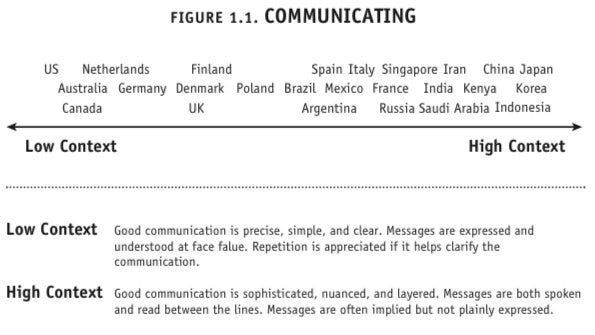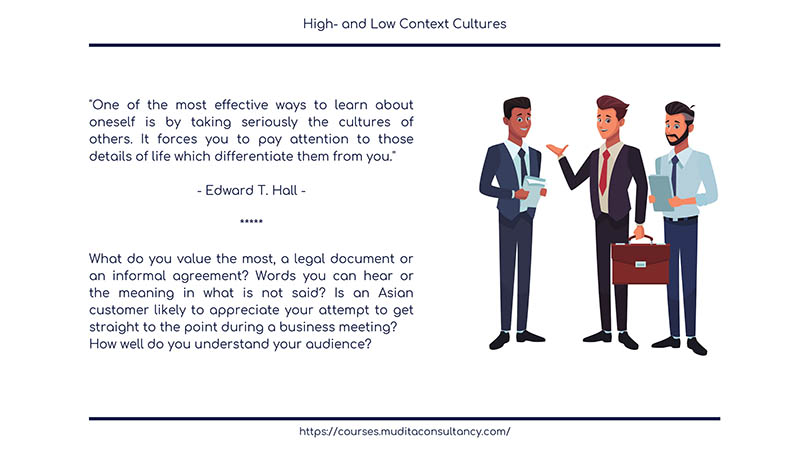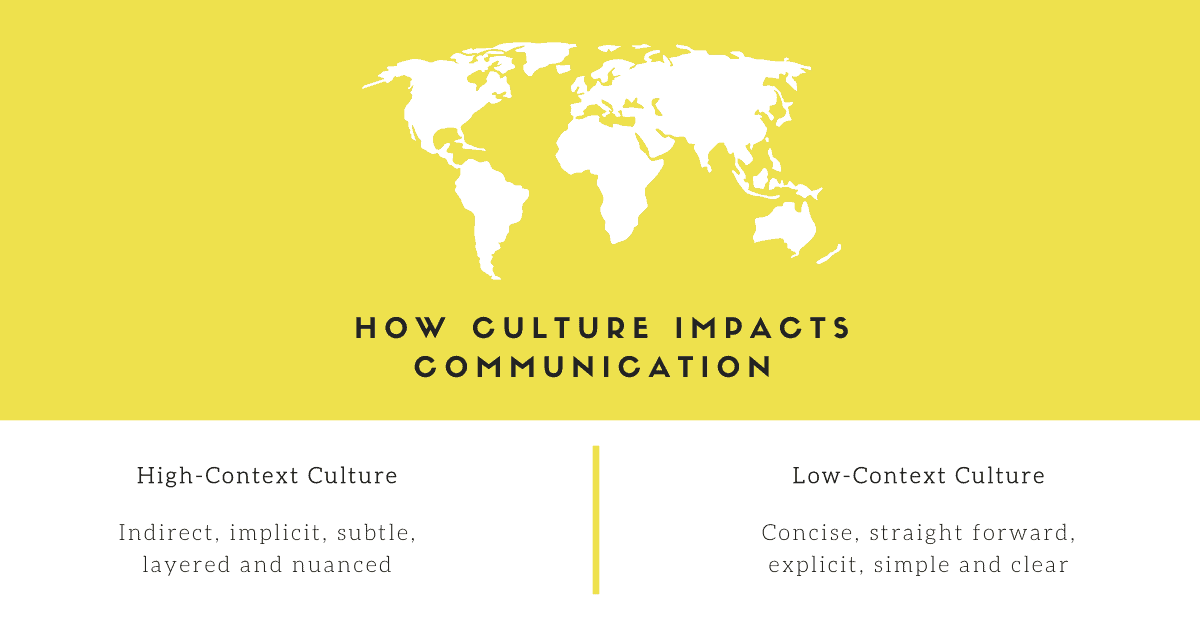High context and low context cultures are terms that describe the way in which people communicate and the degree to which they rely on nonverbal cues and shared knowledge and experiences to convey meaning. These terms were coined by anthropologist Edward T. Hall in the 1970s, and they have become widely used in the fields of intercultural communication and business.
High context cultures are characterized by a strong emphasis on nonverbal communication, relationships, and shared experiences. In high context cultures, people rely on subtle cues and unspoken rules to communicate and understand each other. For example, in a high context culture, it may be more common for people to communicate through gestures and facial expressions rather than through direct, explicit language. High context cultures tend to value relationships and social connections highly, and there may be a strong emphasis on hierarchy and respect for authority.
Examples of high context cultures include many Latin American and Asian cultures, such as China, Japan, and Korea. In these cultures, it is common for people to use nonverbal cues and gestures to convey meaning and to rely on shared experiences and cultural norms to understand each other. In a high context culture like Japan, for example, people may rely heavily on facial expressions and nonverbal cues to convey meaning and may be more sensitive to the unspoken rules of social interactions.
Low context cultures, on the other hand, are characterized by a greater reliance on explicit language and written communication to convey meaning. In low context cultures, people tend to rely more on direct and explicit language to convey their thoughts and feelings, and there is a greater emphasis on individual autonomy and independence. Low context cultures tend to value efficiency and precision in communication, and there may be a greater emphasis on individual achievement and competition.
Examples of low context cultures include many Western cultures, such as the United States, Canada, and Australia. In these cultures, people tend to rely more on explicit language and written communication to convey meaning and may be more direct in their interactions. In a low context culture like the United States, for example, people may be more likely to rely on written communication and explicit language to convey their thoughts and feelings, and there may be less emphasis on nonverbal cues and shared experiences.
In conclusion, high context and low context cultures are terms that describe the way in which people communicate and the degree to which they rely on nonverbal cues and shared knowledge and experiences to convey meaning. High context cultures, such as many Latin American and Asian cultures, tend to rely more on nonverbal cues and shared experiences to convey meaning, while low context cultures, such as many Western cultures, tend to rely more on explicit language and written communication. Understanding these differences can be important in intercultural communication and business, as it can help people to effectively communicate and understand each other across cultural boundaries.







